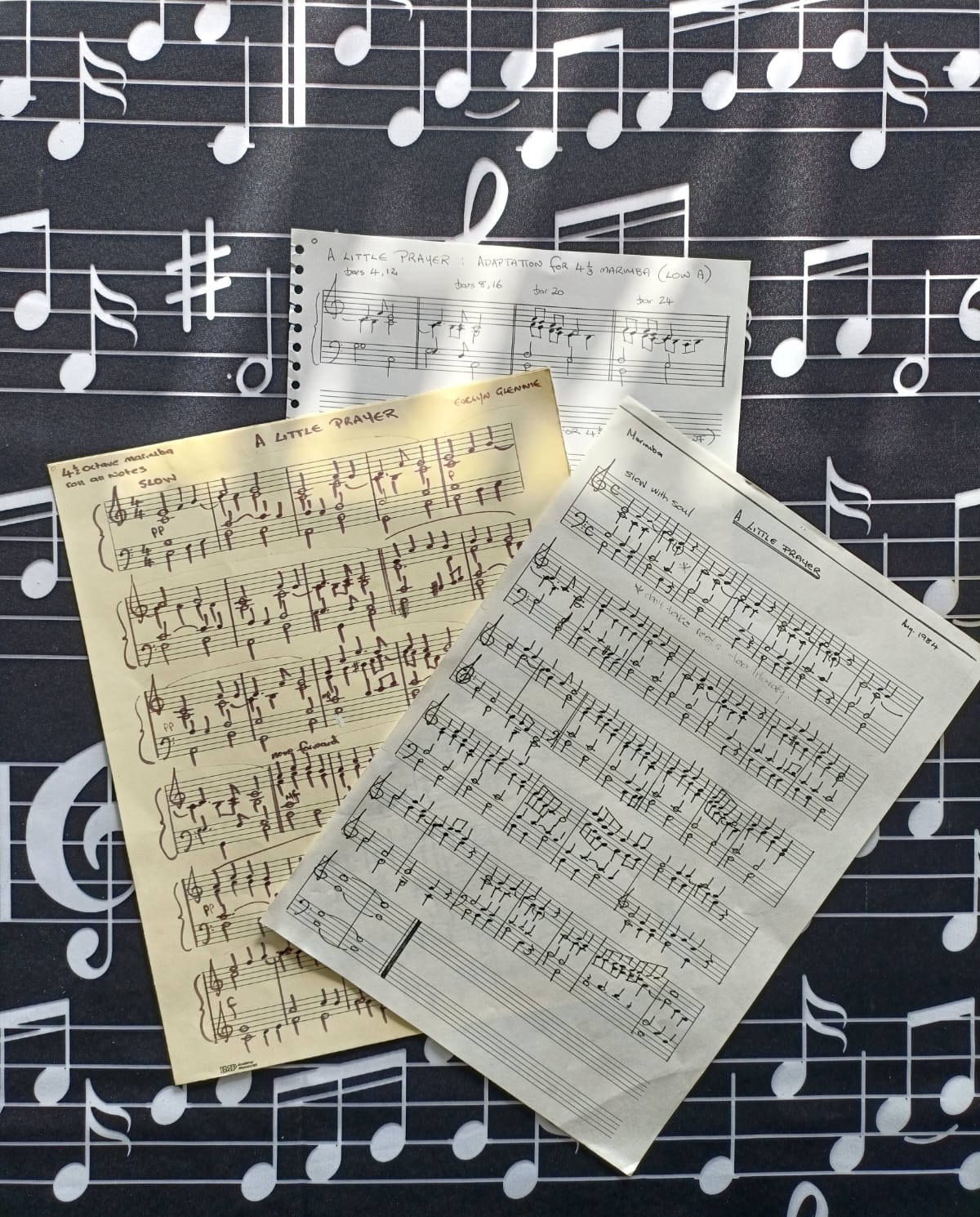When I was 13, I set out to explore the possibilities of four-mallet playing. The exercise seemed simple enough: I wrote a basic harmonic progression to experiment with creating a smooth, flowing sound on the xylophone. But there was one problem – the school had a rickety old xylophone, not a nice resonant marimba. As a pianist, I was accustomed to producing more smooth, legato lines. The xylophone, with its shorter and more percussive sound, seemed like an impossible challenge. However, I was determined to achieve the same legato feel on this “shortest-sounding” instrument I could imagine.
At first, it seemed impossible. The xylophone’s sound cuts off so quickly, and without the resonance of a marimba, I had to adjust my expectations. But I quickly realized that in order to create the sound I was after, I had to forget about the instrument itself. I couldn’t just think of myself as a person playing a xylophone; I had to morph into a musician and sound creator, transcending the limitations of the instrument in my hands. I needed to embrace the harmonic line fully, to let go of the boundaries that the instrument’s sound could impose.
As I played, something interesting began to happen. The harmonic progression, though simple, started to resonate in a way I hadn’t anticipated. Friends, teachers, and fellow students commented that the piece felt like a prayer. It was in that moment that the evolution began. The exercise had started as an exploration of technique, but now it was becoming something more – a musical expression that felt more purposeful. This gave me the impetus to create a more cohesive structure to my harmonic ‘exercise’. It developed and flowed into an actual piece of music.
Following the observations of my friends and teachers, I had nicknamed the piece A Wee Prayer – a very natural title being Scottish! But when I had the opportunity to perform it at a school concert, I realized that the title needed to be something more universal. It needed to reflect the broader resonance I was beginning to sense. Thus, A Wee Prayer became A Little Prayer – a title that felt more fitting for the piece’s quiet, reflective impact.
Little did I know, A Little Prayer would strike a chord far beyond my school concert on the rickety xylophone. Over the years, it has touched audiences from all corners of the world. Musicians from various backgrounds, not just percussionists, have connected with it in ways I could never have imagined. The question often arises: What makes this piece so universally appealing? What gives it such a lasting presence?
Link to Evelyn’s Masterclass on ‘A Little Prayer’
I don’t want to delve too much into analysis, but for me, it’s the sheer simplicity and honesty of the piece. The directness and peacefulness of the music allow space for reflection, for each note and harmony to resonate deeply with the listener. And perhaps most significantly, it provides time. Time to pause, to breathe, and to truly feel the sound. As I worked through the harmonic progression on the xylophone, it became clear that each note wasn’t just a sound; it was a physical experience. My body had to register each note and chord as it passed through the air, and in doing so, I learned something profound about the role of a musician.
A Little Prayer taught me that true virtuosity isn’t about complexity or technique for technique’s sake. It’s about connection. The musician’s role isn’t to impress with skill or speed, but to create a sound story that can speak to the listener’s soul. It’s about being a conduit for expression, regardless of whether you’re a percussionist, a pianist, a brass player, or a singer. In the end, we are all just sound creators.
The beauty of A Little Prayer lies in its personal connection to each listener. There’s no one “correct” way to experience the piece. For some, it might be a deeply religious or spiritual experience. For others, it could be about the sound itself, the purity of the harmonies or the technical challenges of playing it. Others might connect emotionally, finding solace or reflection in the simplicity of the music. This piece, born from a simple technical exercise on a xylophone, has evolved into a living, breathing entity that continues to take on new forms with each interpretation.
Now, years later, it’s incredibly rewarding to see A Little Prayer evolve through countless arrangements and performances, each one beautifully unique in its own right. Each rendition adds a new layer to the piece’s meaning, proving that music, at its best, transcends boundaries and allows us all to engage with it in our own way. From its humble beginnings to its global resonance, A Little Prayer is a reminder that sometimes the most powerful pieces of music begin with a simple, honest gesture that grows into something that speaks to the hearts of many.
A Little Prayer, written by Evelyn Glennie, played by David Childs on Euphonium with the Black Dyke Band is available now as a single, which you can stream here. The track is featured in the new album ‘Virtuoso‘, showcasing music for euphonium and brass band, releasing on April 4th via Naxos.

